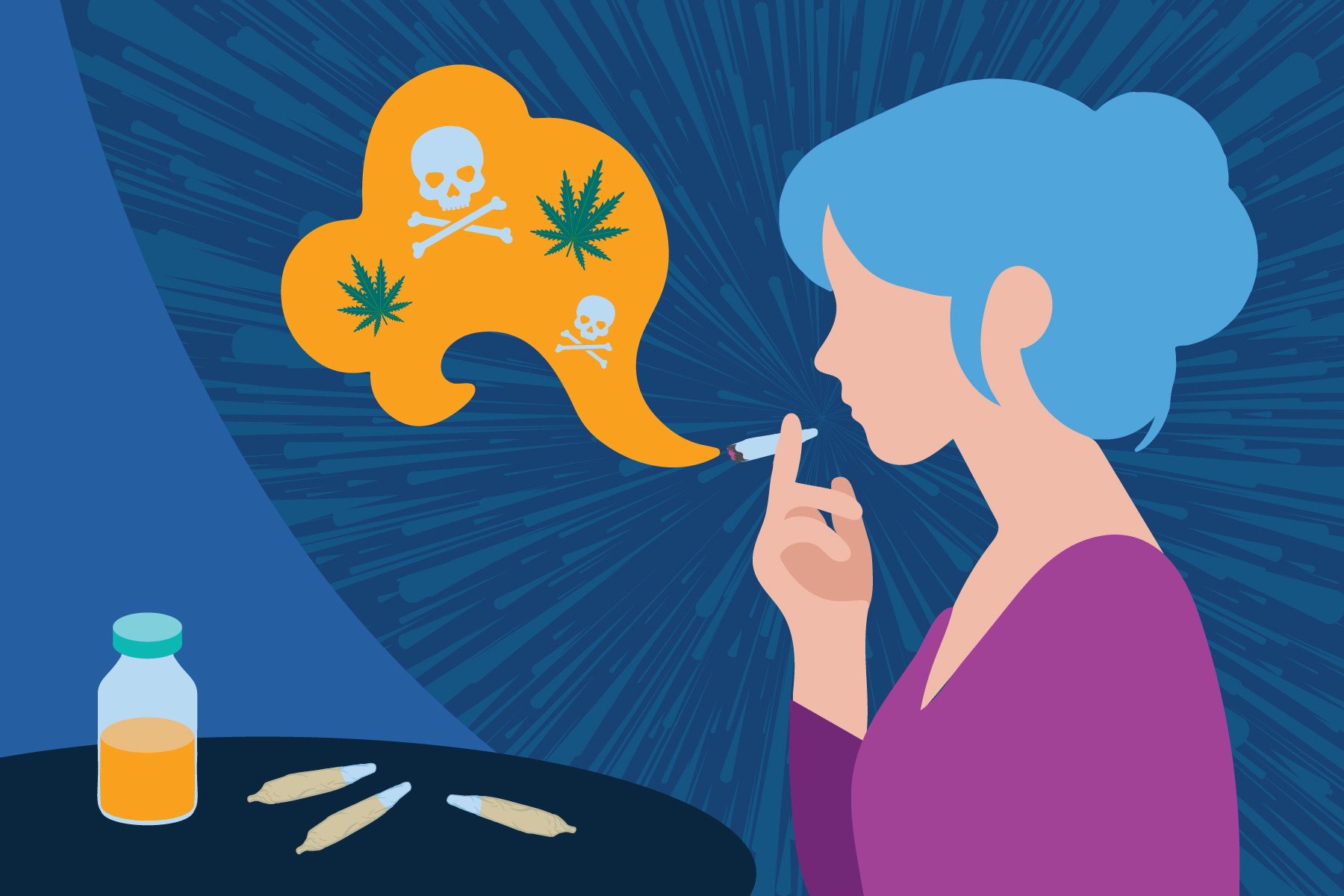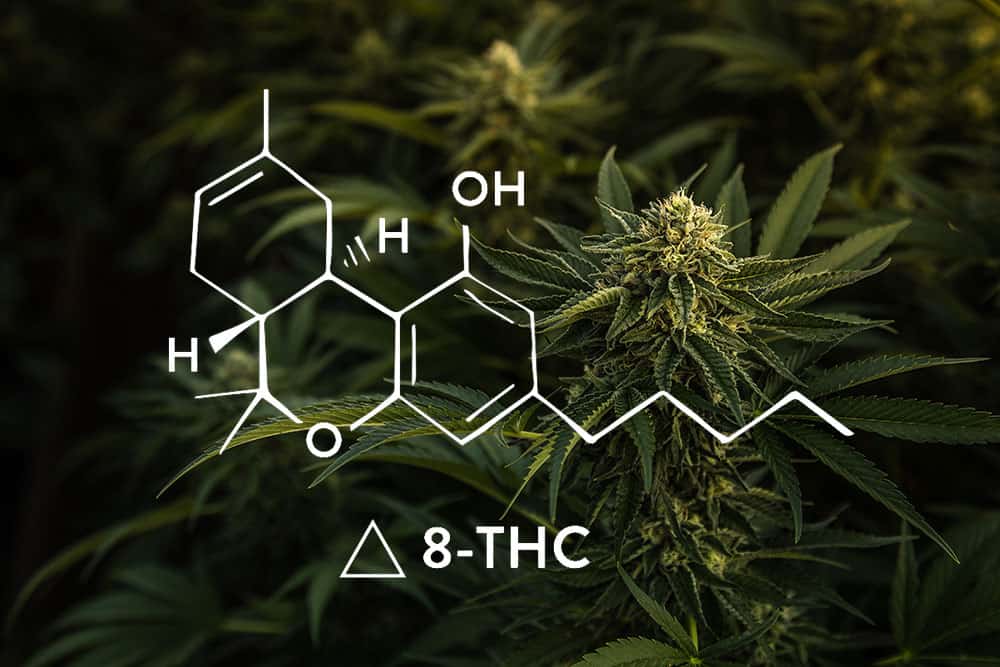Table of Contents
- How Does Substance Abuse Affect Young Adults?
- What Is The Most Commonly Used Substance Among Young People In The US?
- What Are Some Of The Determinants Of Substance Use Amongst Youth?
- What Are Some Of The Risks Of Substance Use In Young Adults?
- What Does The Term “Binge Drinking” Mean?
- What Are Some Of The Effects Of Substances On The Brain?
- What Are Some Warning Signs Of Addiction?
- How Does The Media Play A Role In Influencing Youth To Use Drugs?
- What Substance Use and Addiction Treatments Are Available For Young Adults?
How Does Substance Abuse Affect Young Adults?
Young adults between the ages of 18 to 30 are the most affected population when it comes to substance abuse.
MedlinePlus identifies drug use as; using illegal substances, misusing prescription medicines, including opioids, and misusing over-the-counter medicines.
Examples of illegal substances include cocaine, heroin, inhalants, and methamphetamines.
Misusing prescription medicines would mean you were taking medicine that was prescribed for someone else, taking larger doses than you were supposed to, or using the medicine in another way than intended.
Misusing over-the-counter medicines also means that you are using a medicine for a different purpose than intended.
Substance abuse is dangerous because it leads to higher rates of physical and mental health illnesses, negatively impacts your overall well-being, and can progress to addiction.
Specifically for young adults, substance abuse interferes with the development of the brain and its processes.
Most adults who struggle with addiction began the use of substances as young adults. The younger you are when you begin using substances, the more likely you are to continue to use them throughout your later adult years.
According to SAMHSA, about 2.6 million young adults aged 18 to 25 in 2018 had an illicit drug use disorder in the past year.
Young adults may begin to use substances as a way to fit in with others. High school and college years are a time when teens and young adults may want to experiment and try new things.
Other reasons young adults may use substances can be to feel good, cope with mental health issues and stress, or even improve their performance in school or sports.
Substance use disorders (SUD) typically co-occur with other mental health disorders.
Abusing substances can worsen an already present mental health issue. Correspondingly, when someone struggles with a mental health illness, they may turn to drugs or alcohol as an unhealthy coping mechanism.
Substance use also causes several short-term and long-term health problems.
Depending on the substance used, problems that can arise include:
- Irregular heart rate or breathing
- Heightened or lowered blood pressure
- Heart disease
- Increased risk of cancer
- Harm to multiple organs and systems of the body
Aside from health risks, substance use impacts behavior and relationships.
Some examples may include:
- Poor self-control
- Lack of emotional regulation
- Anger and irritability
- Keeping secrets and lying to loved ones
- Loss of interest in things you used to enjoy
What Is The Most Commonly Used Substance Among Young People In The US?
Alcohol is the most commonly used substance among young people in the United States, followed by nicotine (in tobacco and vape products) and marijuana.
According to the 2019 “Monitoring the Future” survey, there is a growing appeal in vaping nicotine and marijuana amongst high school students.
Alcohol interferes with your mood and behavior, and the more someone drinks, the more their brain and body are negatively impacted.
Alcohol abuse can result in irregular heart rate and breathing, damage to major organs in your body like the heart and liver, a weakened immune system, and impaired memory and judgment.
Alcohol is the most commonly used substance among young people for a variety of reasons. A lot of young adults may view drinking as a part of growing up, especially during the transition from young adulthood into their twenties.
They may use alcohol as an escape from stress, as a result of peer pressure, or sometimes just out of boredom.
When alcohol is consumed in large amounts over a short period, it could cause severe damage to many of the main systems in your body.
There are three main types of drugs; depressants, hallucinogens, and stimulants.
Alcohol is an example of a depressant, along with heroin, benzodiazepines (benzos), and other opioids.
Depressant substances reduce the number of stimulants and slow down the brain.
They are meant to decrease the activity of your central nervous system and relax your muscles; however, when used improperly, they can cause symptoms such as; lack of coordination, slowed heart rate, breathing, and confusion.
Examples of hallucinogens include; LSD, psilocybin, and ecstasy.
Hallucinogens can alter your perceptions and thoughts, and they cause hallucinations, which are sensations or images that may seem real when they are not. These types of drugs may also make you feel disconnected from your body.
Short-term effects associated with hallucinogens may include; increased blood pressure and breathing, paranoia or panic, uncoordinated movements, or irregular behavior.
Long-term effects that may come from hallucinogens can include ongoing psychosis or Hallucinogen Persisting Perception Disorder (HPPD). HPPD causes recurring flashbacks of drug experiences such as visual disturbances.
Many young adults may try these substances to experiment. Hallucinogens pose a danger because they can produce unpleasant experiences, are unpredictable, and may become addictive.
Additionally, with young adults who have a history of mental illness, and even some who don’t, the use of hallucinogens can lead to long-term psychosis.
Stimulants include substances such as; amphetamines, cocaine, Adderall, and nicotine.
Stimulants act opposite against depressants.
Young adults may commonly use stimulants like Adderall to try to improve their performance in school or have overall better focus. However, when someone not prescribed this medicine takes it, it could cause major damage to their brain systems.
What Are Some Of The Determinants Of Substance Use Amongst Youth?
Some risk factors of substance use amongst youth include:
- Family history of alcohol or drug use
- Rejection of sexual orientation or gender identity
- An environment where substance use is normalized
- Co-occurring mental health disorders
- Prenatal exposure to substance use
- Lack of supervision
- Easy access to drugs and alcohol
- Media representation of substances
What Are Some Of The Risks Of Substance Use In Young Adults?
Substance use negatively impacts one’s physical and mental health, relationships, and well-being.
Substance use harms your brain, body, and systems.
When someone uses drugs, they are putting chemicals into their body. Doing so puts your brain and body at risk of dramatic change and damage to important organs and systems. These damages can lead to severe problems or even result in unintentional suicide.
Substance use puts your life at risk.
Not only does it have a direct impact on your brain and body, but substance use can increase the risk of dangerous behavior. Examples of this kind of behavior include motor vehicle accidents, unsafe sex, and irresponsible decisions.
These decisions and actions pose a danger to yourself and the people around you.
Even if it is just starting with experimentation, substance use can progress to addiction.
Because of substances’ effects on the brain, it can become difficult to stop. Your brain will begin to depend on these substances and seek the drug no longer for getting high but also to keep you out of withdrawal and discomfort.
What Does The Term “Binge Drinking” Mean?
Binge drinking refers to excessive alcohol use in a short time.
The National Institute on Alcohol Abuse and Alcoholism defines binge drinking as a pattern of drinking alcohol that brings blood alcohol concentration to 0.08 percent or higher.
Typically this would correspond with five or more drinks for males or four or more drinks for females within two hours.
Binge drinking is most common among younger adults in the age group of 18 to 34.
According to the CDC, one in six adults binge drink, and 25% do so at least weekly.
Binge drinking can result in several negative short-term and long-term effects.
Binge drinking puts someone at higher risk for severe problems such as liver disease, pancreatitis, and cancer.
Other risks that can come with binge drinking include:
- Motor Vehicle crashes and injuries
- Alcohol poisoning
- Sexually Transmitted Diseases
- Accidental pregnancy and pregnancy complications such as miscarriage and stillbirth
- Fetal Alcohol Spectrum Disorders
- Sudden Infant Death Syndrome (SIDS)
What Are Some Of The Effects Of Substances On The Brain?
Drugs interfere with communication in the human brain.
Drugs such as marijuana and heroin mimic the chemical structure of natural neural transmitters. In doing so, they send abnormal messages through the network.
Other drugs, like amphetamine or cocaine, cause neurons to release large amounts of natural neurotransmitters or prevent the recycling of these brain chemicals. This disrupts the normal communication taking place between neurons.
There are three major areas of the brain that are affected by substance use.
This includes the basal ganglia, extended amygdala, and prefrontal cortex.
The basal ganglia are responsible for the brain’s “rewards circuit.” Drugs over-activate this circuit, creating a euphoric high. The brain then becomes desensitized, making it difficult to feel happiness from anything besides the drug.
The extended amygdala is responsible for stressful feelings like anxiety and irritability. When someone is in withdrawal, this area motivates the person to use the drug again. As one’s drug use increases, they begin to use it to get relief from discomfort rather than feel high.
The prefrontal cortex is responsible for problem-solving, decision-making, and self-control. This part of the brain is still maturing through your mid-twenties. Those with a substance use disorder have little impulse control when it comes to seeking drugs.
Alcohol impairs multiple areas of the brain, specifically the hippocampus and cerebellum.
The hippocampus controls your memory. Consuming alcohol leads to memory loss blackouts and affects the ability to learn.
What Are Some Warning Signs Of Addiction?
Warning signs of addiction may include:
- Behavioral changes
- Relationship problems within family or friendships
- Neglecting responsibilities at school, work, or home
- Mood changes
- Possession of substances
- Academic problems
- Frequent lying and stealing
- Poor hygiene
- Saying things that don’t make sense
- Slurred speech or talking very fast
- Change in eating habits; rarely eating or eating more than usual
- Missing important events or appointments; not showing up at places they were expected to be at
- Memory loss
How Does The Media Play A Role In Influencing Youth To Use Drugs?
Nowadays, the media has a huge influence on youth and substance use.
With social media, young adults have easy access to media and marketing, making it easier for companies to promote products like tobacco, alcohol, e-cigarettes, and marijuana use.
Many of these marketing agencies target young adults with the knowledge that youth are more at risk of becoming addicted and purchasing their products again.
These companies see their viewers as money-makers rather than considering the health of the people they are reaching.
Substance use is also common on television in a variety of genres such as crime, “reality,” or comedy.
While some depictions show the truth and reality of drug use, it is also common for substance use to be presented more casually. Either way, it is being shown; viewers become desensitized to the subject and may begin to view it as normal.
When substance abuse is depicted in a more casual and lighter sense, the audience is not being shown the reality and consequences. It could cause viewers to want to experiment or not see the seriousness of it and lead to problems and addiction down the road.
Aside from television and marketing, substance use is common in the music industry.
Exposure to substance use has almost become inevitable with its prevalence in multiple media platforms. This exposure can begin at a young age, putting youth more at risk of wanting to try different substances.
Additionally, because of this exposure, someone who is around a person that wants to experiment may more easily fall victim to peer pressure.
The more media limits the exposure of substances and shows the reality of substance abuse instead of glamorizing it; the better understanding young adults have about these topics.
The more understanding youth have about substance use, the more they can do to prevent themselves and their loved ones from the consequences of substance use and the result of addiction.
What Substance Use and Addiction Treatments Are Available For Young Adults?
There are different types of treatment available for young adults with substance use disorders and addiction.
Some treatments are specifically designed for young adults with SUD.
To decide the best treatment, it is important to reach out to a health care provider or mental health professional that can recommend the best course of action based on the person’s needs.
It is important for family members and loved ones of those struggling with SUD and addiction to be open and understanding. If someone is reaching out for help, you can assure them that treatment and help are available.
If a loved one is struggling with substance use or addiction, there are different ways you can offer support.
One way is to be communicative and listen without judgment. Knowing they have someone there and someone they can confide in goes a long way in their recovery journey.
Another way is to expand your knowledge on SUD and addiction so you can better understand what someone may be going through.
Treatment programs are offered in a variety of forms.
For young adults, and in less severe cases, outpatient treatment may be a good option. Outpatient treatment allows patients to receive treatment from home while still keeping up with responsibilities like school and work.
In some cases, inpatient treatment may be the recommended course of action. Inpatient treatment is in a hospital or health care facility and allows for a controlled environment where you can receive 24-hour supervision.
Some people also find support groups to be helpful through their recovery process.
Support groups allow individuals to share their experiences and feelings and offer insight and support to others who may be going through similar things. Support groups can help people feel less alone, learn new things, make connections, and gain a new perspective.
Behavioral therapy is one of the most recommended forms of treatment for young adults.
Examples of behavioral therapy include Cognitive-Behavioral Therapy (CBT), Contingency Management (CM), or Twelve-Step Facilitation Therapy.
CBT focuses on the mind to identify and change emotions and behaviors. CBT is a form of talk therapy and a common treatment for young adults.
CM is an addiction treatment that encourages positive behavior through tangible reinforcements. This can help young adults establish goals and reach them.
A 12-step program helps people suffering from alcohol abuse and addiction by laying out individual steps.
Behavioral therapy allows young adults to be proactive in the recovery process. Behavioral therapy can help a person recognize how their drug use affects themselves and the people around them.
Medication-assisted treatment (MAT) combines medications with behavioral therapy and counseling to treat substance use disorders.
Substance abuse is most common among young adults. The earlier substance use begins, the more at-risk young adults are for addiction later on in life. Sandstone Care is here to support teens and young adults with substance abuse and addiction. Call (888) 850-1890.













